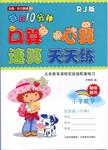题目内容
Grown?ups are often surprised by how well they remember something they learned as children but have never practiced ever since. A man who has not had a chance to go swimming for years can still swim as well as ever when he gets back in the water. He can get on a bicycle after many years and still ride away. He can play catch and hit a ball as well as his son. A mother who has not thought about the words for years can teach her daughter the poem that begins “Twinkle, twinkle, little star” or remember the story of Cinderella or Goldilocks and the Three Bears.
One explanation is the law of overlearning, which can be stated as follows: Once we have learned something, additional learning trials increase the length of time we will remember it.
In childhood we usually continue to practice such skills as swimming, bicycle riding, and playing baseball long after we have learned them. We continue to listen to and remind ourselves of words such as “Twinkle, twinkle, little star” and childhood tales such as Cinderella and Goldilocks. We not only learn but overlearn.
The multiplication tables (乘法口诀表) are an exception to the general rule that we forget rather quickly the things that we learn in school, because they are another of the things we overlearn in childhood.
The law of overlearning explains why cramming (突击学习) for an examination, though it may result in a passing grade, is not a satisfactory way to learn a college course. By cramming, a student may learn the subject well enough to get by on the examination, but he is likely soon to forget almost everything he learned. A little overlearning, on the other hand, is really necessary for one's future development.
1.What is the main idea of Paragraph 1?
A.People remember well what they learned in childhood.
B.Children have a better memory than grown?ups.
C.Poem reading is a good way to learn words.
D.Stories for children are easy to remember.
2.The author explains the law of overlearning by________.
A.presenting research findings
B.setting down general rules
C.making a comparison
D.using examples
3.According to the author, being able to use multiplication tables is ________.
A.a result of overlearning
B.a special case of cramming
C.a skill to deal with math problems
D.a basic step towards advanced studies
4.What is the author's opinion on cramming?
A.It leads to failure in college exams.
B.It's helpful only in a limited way.
C.It's possible to result in poor memory.
D.It increases students' learning interest.
1.A
2.D
3.A
4.B
【解析】文章大意:本文是一篇议论文。成年人常常惊叹他们能很好地记着儿时学过的东西。作者认为这是儿时过度学习的结果,是因为当我们儿时学会一样东西的时候,我们不是就此停止,而是继续练习,才使我们记忆深刻。文章用例证法说明了“过度学习”的概念。 最后作者谈到了“过度学习”的好处和“突击学习”的弊端。
1.段落大意题。根据文章第一段中的“Grown?ups are often surprised by how well they remember something they learned as children but have never practiced ever since.”可知,文章讲的是成年人常常惊叹他们非常好地记着儿时学过的东西。C、D断章取义,讲得太具体,B项错误,因为那是过度学习的结果,不是儿时记忆力好。所以A正确。
2.推理判断题。根据文章的内容可知:作者采用了举例子的说明方法。比如:“practice such skills as swimming, bicycle riding, and playing baseball long after we have learned them.”和“…they [the multiplication tables(乘法口诀表)] are another of the things we overlearn in childhood.”
3.推理判断题。根据文章的第四段“because they are another of the things we overlearn in childhood.”可知,乘法口诀仍然是儿时过度学习的结果。所以选A。
4.推理判断题。根据文章最后一段中的“By cramming, a student may learn the subject well enough to get by on the examination, but he is likely soon to forget almost everything he learned.”可知,突击学习只在有限的方面有帮助。所以B正确。

 每日10分钟口算心算速算天天练系列答案
每日10分钟口算心算速算天天练系列答案